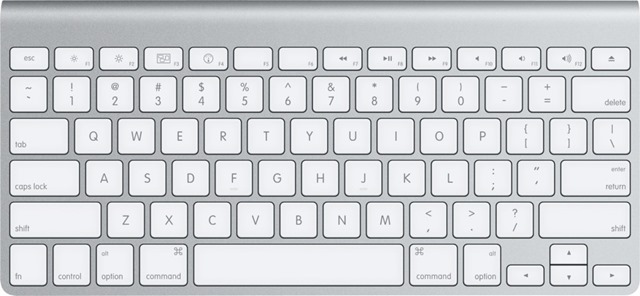If you have recently passed from a system Windows to one MAC OS X, most likely you are still confused when you use keyboard the latter. And if you used to use all kinds of shortcut-uri on the keyboard to work in Windows, definitely you have times when you try to use those shortcuts and on Mac keyboard, just to wake you either that some of them do not work at all or that certain results are at least WRONG in OS X.
Much of Shortcuts for Mac works similar to those for Windows, the only difference between these being that on Mac, instead of Ctrl and Alt The keys are used Command and Option. And some of the Mac shortcuts have no alternative to Windows. If you want to learn The most used shortcuts on Mac OS X, throw your eyes on the ones listed in this article.

Essential Shortcut list to work on a Mac OS X system:
- Command + Space – when you want to look for an application or file in the system quickly; This combination of Mac displays Spotlight Search-ul, similar to Search-ul FROM Start Menu/Start Screen FROM Windows (usually launched using the key Windows)
- Command + Option + Escape – launches the dialogue Force Quit Applications, through which you can Finish non -deponsive applications (similar to the combination Ctrl + Alt + Escape, which launches Task Manager in Windows)
- Command + Shift + Option + Escape – Keep pressed for a few seconds this combination of keys to Finish forcibly all active applications from Mac (useful when you cannot open the dialog Force Quit Applications To close non -depositing applications)
In terms of browsers, shortcuts for navigation are also similar to those of Windows, the difference being the use of the key Command Instead of keys Ctrl and Alt:
- Command + F - open one camp de search To allow the user to start a search on that page (this shortcut works for most applications)
- Command + Left Arrow (left arrow) - go back a page
- Command + Right Arrow (right arrow) - go a page forward
- Command + T – Open one new tab
- Command + W -Close the current tab
- Command + L - Fix the focus on Bara de Adrese In order for the user to be able to type a new address immediately or initiate a new search (if in the respective browser the address bar coincides with the search bar)
- Ctrl + Tab -Allows navigation between open tabs (Switch)
- Ctrl + Shift + Tab -Allows reverse navigation between tabs
For text editing SHORTCUTs are also used. The following key combinations will be useful on a Mac OS X system:
- Command + A - Select All (select the whole text)
- Command + X - Cut (cut the text selected)
- Command + C - Copy (copy selected text)
- Command + V - Easter (bonding text copied or cut)
- Command + Z - Undo (cancel the last order)
- Command + Shift + Z - Redo (restore the last order)
- Command + Left Arrow - Place the cursor at the beginning of the current line/row
- Command + Right Arrow - Place the cursor at the end of the current row
- Option + Left Arrow - move the cursor to the left with a word
- Option + Shift + Left Arrow - Select the immediate word from the left of the cursor
- Option + Right Arrow – move the cursor to the right with a word
- Option + Shift + Right Arrow - Select the word immediately to the right of the cursor
- Option + Delete - Delete the immediate word from the left of the cursor (in OS X, the key Delete is the equivalent of the key Backspace in Windows)
For Administration of open applications In the system, use the following key combinations:
- Command + Tab - Navigate through the list of applications open in Mac (it works as ALT + LOSS in Windows)
- Command + Shift + Tab - Navigate in reverse order through the list of open applications
- Command + Q - Close the current application (alternative to ALT + F4 in Windows)
- Ctrl + Left Arrow -Move with a desktop to the left
- Ctrl + Right Arrow -Move with a desktop to the right
- F3 - Open Mission Control To view all active applications and desktops
- Command + Shift + 3 - Do a screenshot on the whole screen (these are the settings default, which users can modify according to your preferences in System Preferences > Keyboard)
- Command + Shift + 4 -Make a partial screen of the screen (screenshots are saved default on the desktop)
STEALTH SETTINGS – List of essentials shortcuts for Mac OS X
